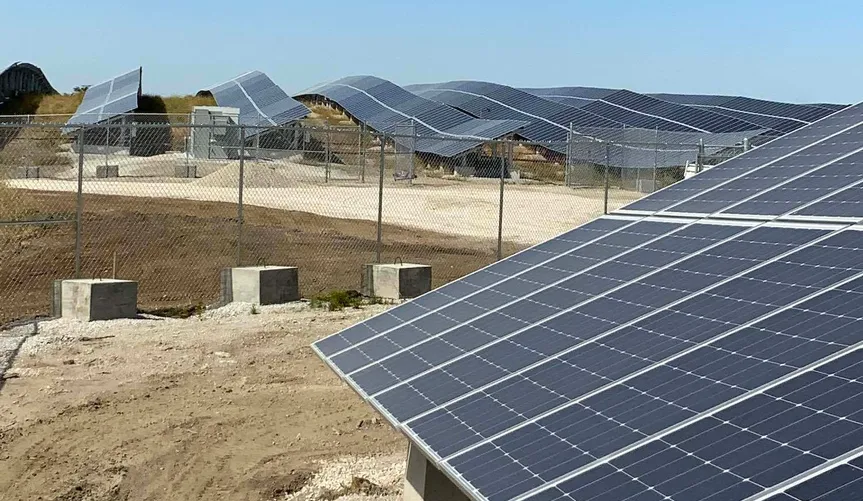
One of the big knocks against solar panels is how much land they take up compared to how much power they generate. But what if there were a readymade source of open land nearby to cities and towns that was guaranteed not to be used for anything else?
As it turns out, landfills are becoming prime real estate for solar farms, and one nonprofit believes the U.S. could increase the nation’s solar energy capacity by 63 gigawatts, or approximately 60%, simply by building solar farms on landfills.
Solar firms are building these landfill solar farms all over the country, and while they present a bigger engineering and economic challenge then building one on flat ground, the appeal of refurbishing capped landfills and brownfields from their barren state into a new service for the community is deeply appealing.
For example, Nexamp’s Solar Star Urbana Landfill community solar farm occupies nearly 40 acres on a capped landfill, meaning one that isn’t accepting solid waste and which has been “capped” with concrete or other material to block rain from seeping through to the decomposing waste below.
It features nearly 14,000 solar panels and generates 5.2 megawatts of clean energy for low and middle income residents, who receive discounts on their energy bill if they sign up to take on the solar energy.
MORE: Largest Farm to Grow Crops Under Solar Panels Proves to Be a Bumper Crop for Agrivoltaic Land Use
IKON Environmental Energy is building a 70 megawatt solar farm in Houston Texas called the Sunnyside Energy Project that will power 12,000 homes, atop a 240-acre capped, methane-leaking landfill that will also host community features like an electric vehicle charging point, bio-digester to turn certain waste sources into green energy and fertilizer, and a community garden.
Annapolis Maryland has one too—55,000 panels on an 80-acre landfill, generating power for 2,500 people.
It isn’t the easiest thing to build a solar farm on a landfill. For one thing, the traditional method of securing the panels on concrete struts buried in the ground is out of the question, as it would break the cap on the landfill. This also currently puts a landfill solar panel out of the reach of current technologies that allow the movement of the panels to follow along the sun.
However there are also aspects which are easier, for example there are usually underserved communities that live nearby landfills, and the local cheap power access (solar is usually either subsidized or rewarded) can help save them money.
RELATED: Inspired to Save Their Arctic Home, This First Nation Installs 300KW Solar Station
Furthermore, there’s no risk of facing high land prices, or a bidding war from someone else who may want to use a pristine stretch of meadow for something else.
There are more than 10,000 closed or capped landfills around the country, and perhaps as many as 4,000 of them could be turned into solar farms immediately.
POWER UP the Good News; Share This Story…




















This is a step in the right direction. But until humans can reduce the number of people living on this rock, it is not a solution. It is just a stopgap method. What is needed is a reduction in population.